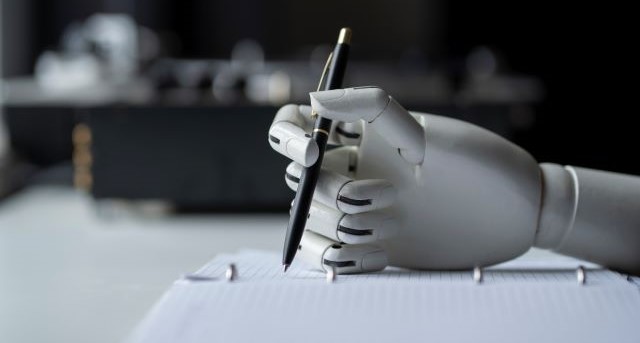One of the most pressing issues for higher education within the last several years is the advent of Artificial Intelligence (AI). At the heart of composition faculty in particular, but of the entire higher education community as well, are those of us looking for solutions for students using AI to write papers. As others and I have discovered, there is finally hope in sight. After a conversation with a colleague, I began looking at how it might be possible to see the drafting process students use as they create their compositions. I found multiple articles online which followed this idea, but they were not specific enough to show me how to actually do it or how to use it to develop an academic honesty policy concerning AI. This article will expand on those long-searched for details so everyone will have a process on academic honesty policies regarding AI.
In order to write an academic integrity policy for those cheating with AI, universities and colleges look for documentation and, thus, many of us use Turnitin.com or other plagiarism detectors. AI detectors so far are unreliable, and that is why few, if any, schools have determined a policy that works for handling cheating via AI. Professors need incontrovertible proof of cheating, and students have no way to prove they are not cheating. Without some kind of documentation, no school-wide policy can be developed; however, if professors could obtain proof of the recursive process of a student’s drafting, then they could better assess the cheating claim. More importantly, an academic integrity policy could be developed via documenting the recursiveness. To that end, I began to look for a way for students to provide evidence of their recursive composing process. As I discovered in my search, Google Docs has this ability.
As a Google Docs rookie, none of the articles I read told me exactly how to track this process. When I went to Google Docs and clicked on version history, I was only getting days of drafts saved rather than actual changes made during a composing session. Rookie me did not know how to see the modifications which were crucial to proving the student’s recursive process. Fortunately, the best hint came with an article by Johannes Helmond who reported that students were able to “track all the modifications made to the document,” but it still did not tell me how to do that. So, I continued my online search and found how to use Google Docs’ detailed version history by clicking on the arrow by the date next to version. This showed me the minute-by-minute changes a student made and showed me how long the student worked on each draft that was saved. Finally, I could help prove a student had actually written their paper.
Now that I had a solution, I had to make sure my students knew about this solution and encourage them to use it. First, I told students via my syllabus that if I received a report saying a paper had AI content, they could be considered to be cheating if they could not provide proof of authorship. Additionally, I included that I would provide them with a solution to prove that no AI was actually used.
What many students do not know, is that no one sits down and writes a paper, even a paragraph, without starts and stops. Students needed to understand that this very recursiveness is what they could document as their “proof” that they had written the submitted paper. In the first week of my course, students participated in a lesson about recursiveness and Google Docs. They learned that Google Docs would provide them with proof of composition via the detailed version history; this included where they had made changes, where they had cut and pasted, and how long it had taken them to compose anything (three crucial factors). If they had AI detected in an essay, they could prove they had written the essay by allowing me editing access, which allows me access to the detailed version history. Editing access would allow me to see those three crucial factors and they would have their proof of composition. Following this, they took a quiz to make sure they knew they were accountable for their own proof. Students who did not receive high scores were required to discuss it with me personally, similar to what I do when teaching old-fashioned plagiarism.
Having piloted this process with students in a previous semester, I only have minimal evidence that this solution is workable; more evidence is needed before a policy can be built. To that end, my English department is using Google Docs this semester to provide better evidence. Additionally, by utilizing the concepts from this article, other institutions of higher education can use Google Docs to document their students’ recursive writing process and contribute more evidence to the efficacy of this approach to battling cheating via AI.
References
Helmond, J. (2023, August 9). My essay didn’t pass the AI-generated content test. How can I
possibly prove my innocence? A Help/ https://academichelp.net/blog/student-life/caught-in-the-ai-crossfire-a-high-school-students-fight-against-unjust-accusations.html
Fowler, J. A. (2014, August 14). What to do when you’re accused of AI cheating. The
Washington Post. https://www.washingtonpost.com/technology/2023/08/14/prove-
false-positive-ai-detection-turnitin-gptzero/
Neld, D. (2023, May 25). Prove your writing is not AI-generated by tracking changes in your
docs. Popular Science. https://www.popsci.com/diy/track-changes-in-word-google-doc-pages/
Racine County Eye Staff. (2018, August 23). How to prove your essay wasn’t written by AI: 7
steps to prove authorship. Racine County Eye Journalism that Serves.
https://racinecountyeye.com/2023/08/23/to-prove-essay-wasnt-written-by-
ai/#:~:text=Provide%20draft%20history,your%20drafts%20and%20stores%20th
em.
Revision history in Google Docs. (n.d.). WHPS Tech Tip. https://www.smore.com/4wama-
revision-history-in-google-docs
Shumack, J. (2020, June 24). Viewing student progress (draft) for an assignment. Instructure |
Community. https://community.canvaslms.com/t5/Idea-Conversations/Viewing-
student-progress-draft-for-an-assignment/idi-p/374977
Verson history. (n.d.). GCF Global. https://edu.gcfglobal.org/en/googledocuments/version-
history/1/
Wame, B. M. (2008). Writing steps: A recursive and individual experience. The English Journal,
97(5), 23-27. https://www.jstor.org/stable/30046879






